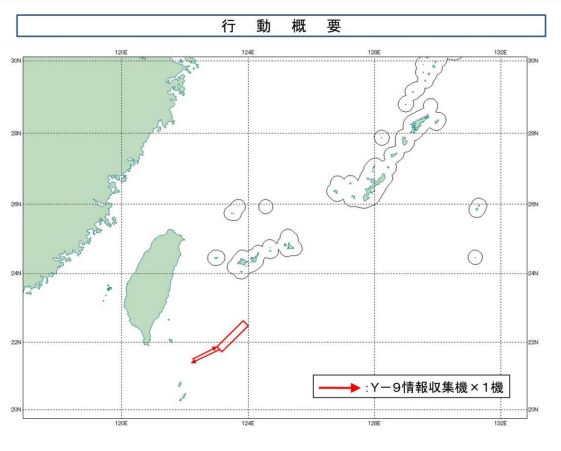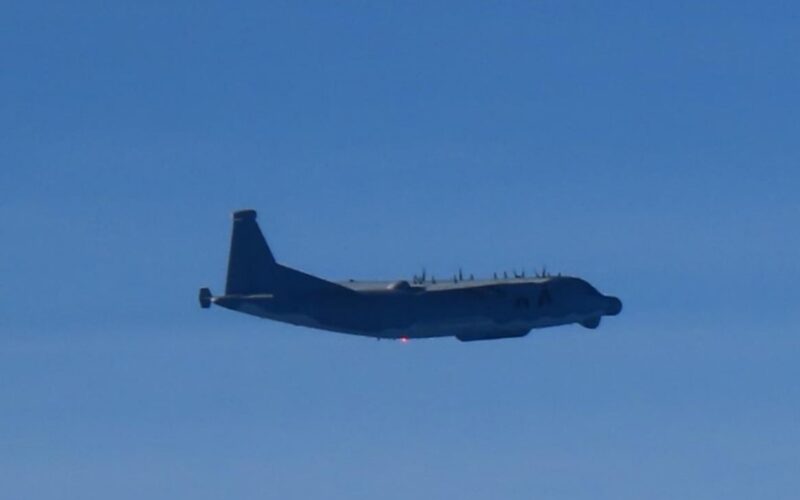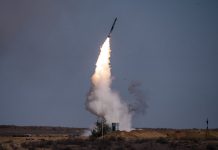On June 8, Japan’s Air Self-Defense Force (JASDF) intercepted PLA’s Y-9DZ electronic-warfare aircraft over the Pacific Ocean, marking this aircraft type’s first-ever sighting and photographic documentation.
Super Interceptor & Super Spy Plane: Russia’s MiG-31 ‘Super Foxbat’ Remains A Mystery To The West
The map provided by Japan’s Ministry of Defense indicated that the surveillance aircraft was detected approximately 225 kilometers (140 miles) south of the Yaeyama Islands, an archipelago in the southwest of Okinawa Prefecture, Japan.
In a media release on June 8, it was reported that upon detecting the aircraft, the JASDF promptly deployed fighter jets to visually identify and escort the Chinese military aircraft into international airspace.
“On the morning of June 8, 2023 (Thursday), a Chinese Y-9 electronic intelligence aircraft was spotted flying over the Pacific Ocean,” said the statement.
The press release did not mention the specific fighter jet dispatched by the Japanese Ministry of Defense to intercept the Chinese military aircraft.

The sighting of a new Chinese airborne intelligence, surveillance, and reconnaissance aircraft comes when the US and Tokyo are strengthening their cooperation in the face of the growing Chinese military aggression in the region.
The region is witnessing a growing presence of spy aircraft deployed by both sides, potentially indicating a rise in close-in intelligence-gathering activities aimed at collecting, categorizing, and analyzing various electromagnetic signals.
In addition to the military aircraft, a Chinese navy survey ship also made an incursion into Japan’s territorial waters near islands in Kagoshima Prefecture on June 8, marking the most recent occurrence of such a vessel in the region since February of this year.
Over the past few years, Chinese ships have recurrently trespassed into Japan’s territorial waters or navigated through nearby areas, notably in the vicinity of the Senkaku Islands located in the East China Sea.
These uninhabited islets, under Japan’s control, are also claimed by China and referred to as Diaoyu. The disputed islets remain a persistent cause of tension between Japan and China.
Survey vessels are commonly employed for various research purposes, including the mapping of underwater topography to facilitate submarine navigation.
Meanwhile, Tokyo’s top spokesperson, Hirokazu Matsuno, stated during a press conference that Japan has officially filed a protest against China due to the incursion of Chinese naval and coast guard vessels into Japan’s territorial waters near the southwest archipelago.
PLA’s New Y-9DZ Electronic-Warfare Aircraft
The Y-9DZ is China’s newly developed electronic warfare version of the Y-9 aircraft, a medium-range, medium-sized tactical transport aircraft manufactured by the Shaanxi Aircraft Company.
The Y-9DZ was initially spotted in 2017, and China officially unveiled this aircraft in 2019, along with another electronic warfare variant known as the Y-9G. However, the Y-9DZ variant is the most advanced intelligence-gathering aircraft developed by Beijing.
Featuring state-of-the-art sensors and communication systems, the Y-9DZ is equipped to perform a diverse array of observation tasks, such as electronic surveillance, signal intelligence, and imagery intelligence.
The Y-9DZ boasts two large rectangular-shaped ESM/ELINT (Electronic Support Measures and Electronic Intelligence) antennas on each side of the rear fuselage and a range of other antennas strategically placed throughout the aircraft.
Also, an oval dish-shaped ESM antenna is positioned atop the vertical fin, while a SATCOM antenna sits on the mid-fuselage.

Furthermore, a potential SAR antenna may be located beneath the forward fuselage. Reports suggest that the presence of pipe-shaped antennas on the fuselage side suggests their purpose may be related to PSYOP operations (psychological operations).
This configuration strongly suggests that the Y-9DZ represents a new generation of versatile EW aircraft capable of executing specialized missions, including ELINT, SAR surveillance, communication jamming, and PSYOP.
The Chinese military, consistent with their typical practice, has kept a significant portion of the detailed information regarding this aircraft undisclosed. As a result, the full extent of its capabilities remains largely unknown.
How many aircraft are in service with the Chinese military is also unknown. Nonetheless, the Y-9DZ aircraft can play a crucial role in the Chinese military by effectively locating and identifying foreign military land, naval, and airborne radar signals.
With its advanced sensors and radars, the Y-9DZ can provide invaluable strategic intelligence that can aid Chinese warfighters in their operations. It is a significant asset in surveillance and intelligence gathering, contributing to heightened situational awareness and supporting military operations.
- Contact the author at ashishmichel(at)gmail.com
- Follow EurAsian Times on Google News




